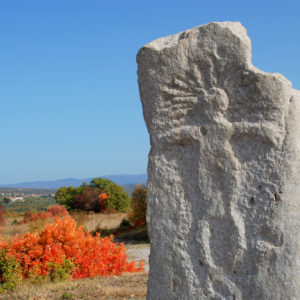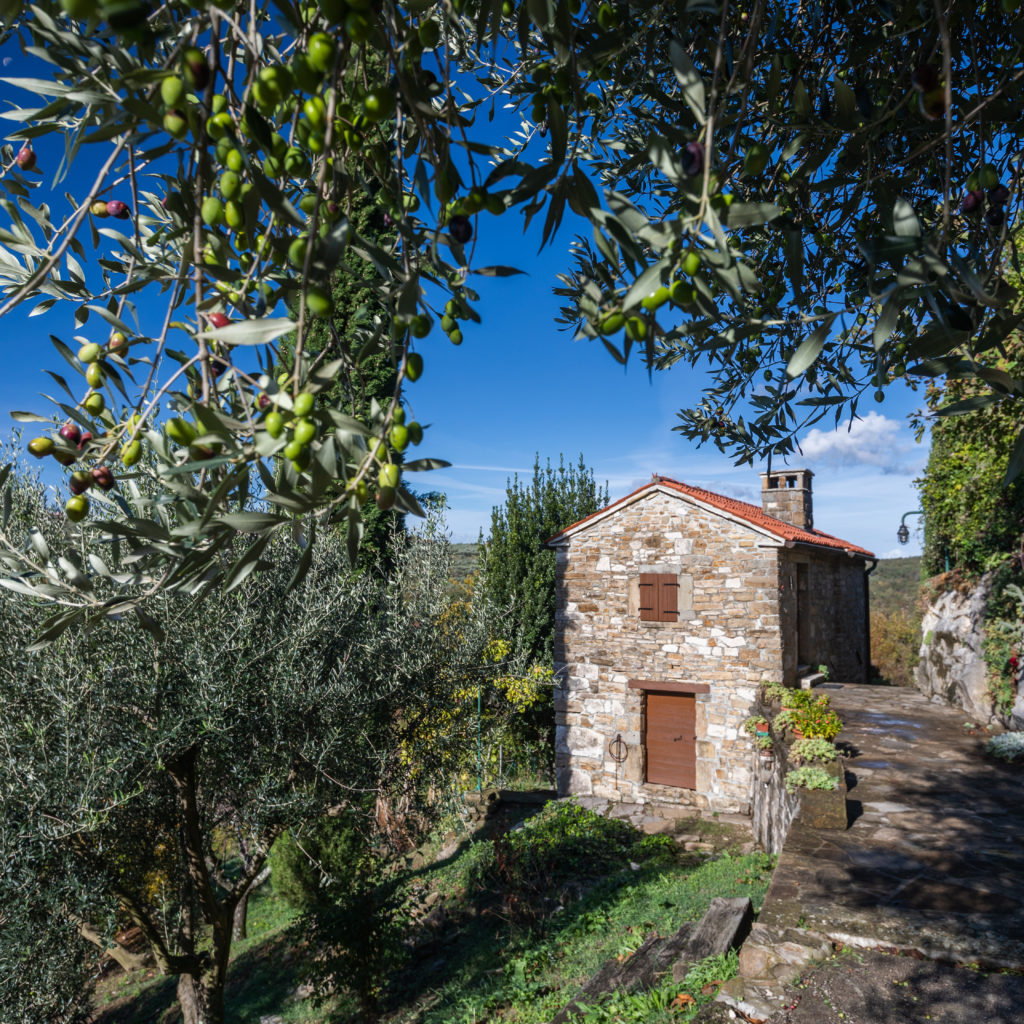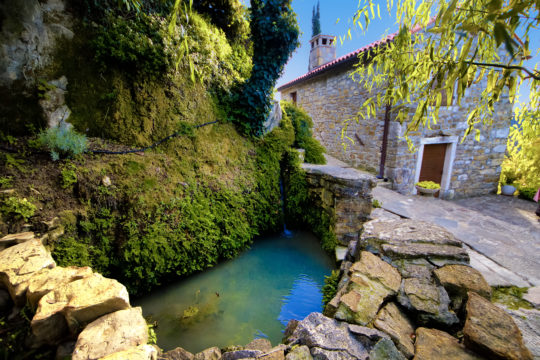The village is built on three living rocks and offers a wonderful view of the surrounding hills and villages.
Although the village was first mentioned in 1450, the archaeological sites of Gradišče and Žvabi bear witness to the existence of prehistoric settlements in this area.
Under the site of Gradišče, a 2.5m high stone with a relief on both sides was later set up, which represents one of the bigger attractions of the Slovenian Istria. It shows a man (or deity – according to certain theories the sun god) with open arms and rays around his head. Today, the village keeps a replica of the stone, while the original is kept in the Koper Regional Museum.
The importance and time of origin of the Krkavče stone are difficult to determine. It may have been formed in ancient history and it is the only Slovenian menhir, but perhaps it is a depiction of the Persian god Mitra.
The peculiarity of the stone is also its location: a Roman road was built in its vicinity, and the stone was found near the Roman archaeological site; some give a special meaning to the fact that the stone lies at the intersection of the nearby churches that form a proper Latin cross, whereby the stone is the centre of the cross. The churches were supposedly built around the stone to destroy its “devil’s power”.
On the other hand, some experts of radiesthesia claim that special, good energies are present around the stone. Maybe that is why the stone was worshipped with different rituals. It supposedly affects fertility.
It is definitely a mystical place, a place worth visiting.
At the square in the centre of the village, on the edge of the natural pier (on two huge natural stone platforms) stands the Church of St Michael. It is a single-nave, richly decorated Baroque church with a Renaissance foundation and a Venetian-style bell tower, which once served as a defence tower.
However, a visit to the village is not complete without stopping by the Vrešje House. It is a living museum in a beautiful stone house, built on a rock that will offer you an insight into the former life of the inhabitants of the village. In addition to the preserved Istrian kitchen with a fireplace and exhibited objects, the Istrian greeting of the house owners will also make an impression on you.




